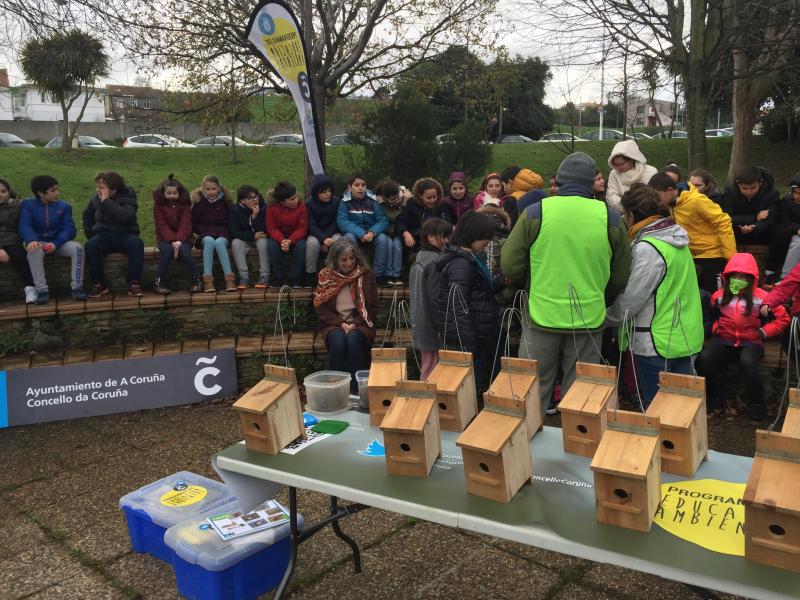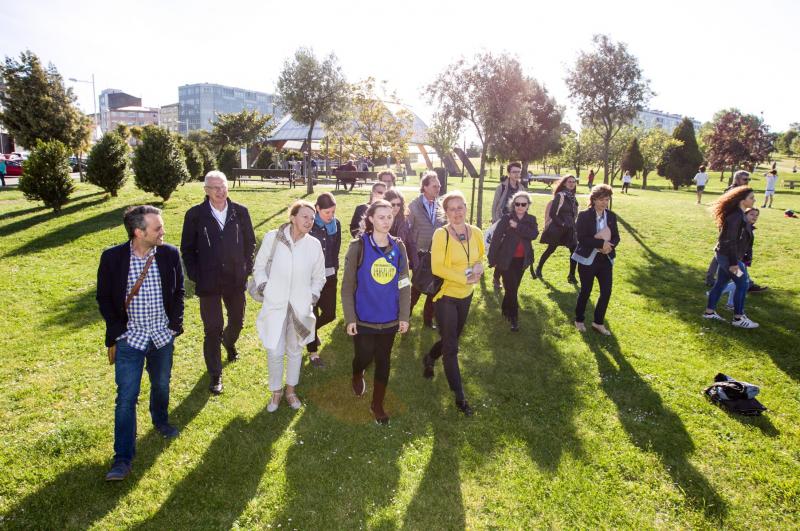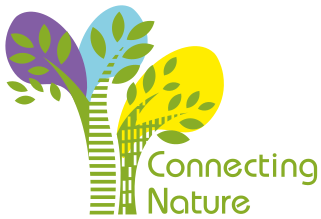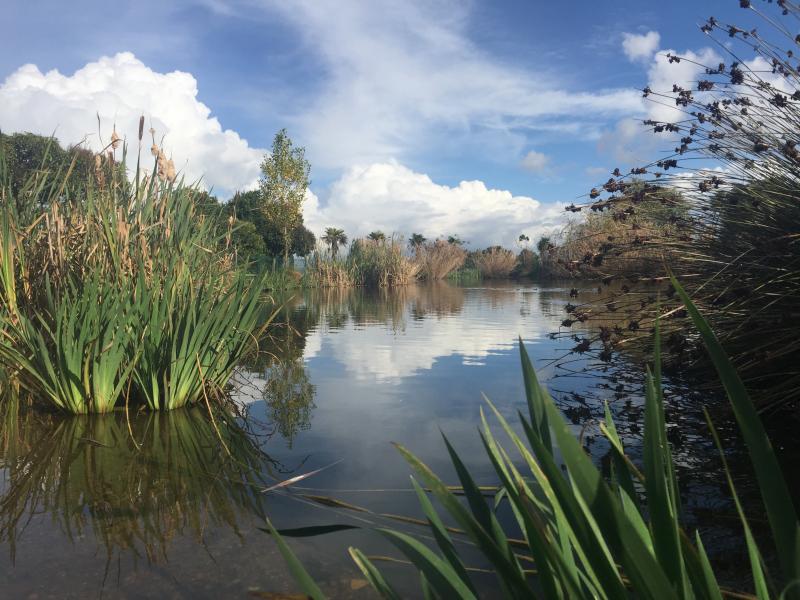Environmental restoration of the Eirís Park: an opportunity to promote healthy lifestyles through contact with nature, education and environmental participation

A Coruña is medium-sized city sited in the Northwest of Spain with more than 244,000 inhabitants who live in barely 37.8 km2. Due to this high population density, A Coruña has a reduced number of green areas (compared to similar European cities), but the existing urban parks are authentic green lungs, which contribute to the improvement of air quality and the fight against climate.
Urban parks are also spaces of leisure and sport and, as various studies demonstrate, the restorative effect of nature contributes to increase people’s quality of life, with positive effects on the physical and psychological health.
In this article we present an environmental restoration experience on one of the most important green areas of the city of A Coruña, the Eirís Park. The naturalization of a wetland and the involvement of citizens in the park design, through participatory budgeting, had immediate positive effects in terms of improving biodiversity and increasing the number of visitors to the park, turning it into a multifunctional and intergenerational urban natural space.
The creation of Eirís Park: recovering an industrial area for citizens
The Eirís Park covers a total of 8.77 hectares of natural space, which contains a rich historical past - with the ruins of a 17th century castle - and natural beauty, with spectacular views of the ocean, the harbour and nearby beaches.
The Eirís Park was created in 2003, as a result of a natural restorative project which aimed to recover this land from the severe impacts caused by the industrial development of the area in the past century.
This part of the city was transformed from a traditional rural area -with land dedicated to agriculture- in almost an abandoned area surrounded by the large infrastructures connecting the harbour with the city, as well as a gas pipeline underground.

The creation of the new park involved the construction of a large pergola in the upper zone of the neighbourhood, the formation of a pond that increases the biodiversity of the area, as well as other facilities for the leisure of citizenship.
Environmental issues to be faced: poor conservation of the environment and water resources in the park
After more than a decade of existence, the Eirís Park suffered from certain problems related mostly to the environmental conservation of the surroundings of the pond of Eirís. Then, the deficient regeneration of water resources in the pond caused a problem of water pollution which jeopardized the life of the different animal and plant species living in this habitat.
Secondly, the presence of certain invasive species endangered the native flora of this space, which resulted in a loss of biodiversity in the city.

Transformation of Eirís Park into a multifunctional and intergenerational urban natural space
In order to improve the environmental conditions of the Eirís park, A Coruña City Council developed in the past year a series of targeted interventions, aiming also to incentive a multifunctional use of this large green space by the public.
The pedestrian connections to the park were increased with wide pathways that enable the contact of citizens with the nature. The different areas of the park were restored for intergenerational leisure and recreation neighbours and visitors, taking into account the needs of children, younger and elderly public, who needs spaces for conviviality and conversation.
"Our goal is to promote the multifunctional use of this great green space by the whole of citizenship: children, youth and elderly people”
Three main interventions were launched in the park:
- The naturalization of the pond, in order to create a natural wetland that nurtures a wide variety of autonomous fauna and flora and serves as a resource for environmental education.
- The creation of an urban ecological garden in the park, enabling neighbours to produce organic groceries.
- The creation of a dog area that conciliates the demands of visitors with the needs of domestic animals’ to freely run and joy.
The works of naturalization of the Eirís pond consisted of the restoration of the ecological conditions of the pond: taking advantage of the park’s water natural resources, three submerged pumping devices were installed as well as vertical waterfalls that increase the renovation of water in the pond.
This area turned into a natural and self-sufficient wetland, and interventions reduced the maintenance and cleaning demands. As the picture above shows, the pond looks now as a small lagoon able to nurture a great diversity of wildlife, mostly waterfowl.

The intervention was completed with the placement of native vegetation with high oxygenation capacity, essential for maintaining the ecosystem. It purifies and uses residues and nutrients, and regulates the temperature of water. This solution allows species that require water in motion for living -such as amphibians, dragonflies or birds- to be in the area.
Next, some flora invasive species were eliminated and substituted by local aquatic species, such as Sambuco and Salix bushes, for a better transition between the wetland and the rest of the park. Finally, a wooden fence was placed around the area. Some panels inform the visitors about the type of birds and other animals that live in this space.

In 2018, students from the school near to the park conducted an environmental education activity consisting of the placement of ten bird boxes to attract new species and increase the number of birds in the park.
Outcomes and impact of the naturalization of the Eirís pond
"Ducks, geese and other birds find in this environment the ideal conditions to develop their biological cycle: sufficient water resources, land and adequate vegetation in the surroundings”
Since the naturalization of the Eirís pond, wild ducks, geese and around 50 species of birds find in this habitat the ideal conditions to develop their biological cycle, as they have sufficient water resources, land and adequate vegetation in the vicinity.

The restoration of the vegetation allowed new species of birds, insects, reptiles and amphibians to have access to wetlands. As curiosity, the common moorhen (Gallinula chloropus) breeds now in the lagoon of Eirís, a species that has not been seen in the city since the nineties!
A second positive impact of this green area is the increasing contact of population with the nature within the urban area of A Coruña. The Eirís Park has been included within the local environmental education program developed by the Council. Outdoor activities allow scholars enjoy and to learn about the wildlife and biodiversity of the Eirís pond.
A multifunctional and intergenerational urban natural space
An increasing number of neighbours and visitors come frequently to Eirís to enjoy nature, to play in the green areas and use the facilities of the park. The city council has enabled also a canine area where dogs can freely run in a large green space. These interventions aim that different types of population do “appropriate” the park, giving different uses while taking responsibility in nature conservation.
“Urban ecological gardens, a citizenship's initiative that promotes the learning and the set out of sustainable lifestyles”
Over the next few months, the neighbours of the park will begin to grown their own groceries in the new urban ecological gardens launched by the City Council as a proposal of the citizens involved in the Participatory Budgeting program.
The beneficiaries of the urban gardens must follow organic agriculture techniques as well as be involved in community activities. To this end, they must attend a specific educational program that combines gardening techniques (e.g. organic production, community compost, etc) with learning about good practices for social participation in the decision-making processes.
"The creation of green urban areas, accessible to a wide range of citizens is a key strategy for the promotion of healthier and sustainable lifestyles"
Gradually increasing the number of green areas planting more 1.500 trees in one year is one of the strategies of the council of A Coruña to adapt the city to the effects of climate change and enhance citizen’s quality of life, following the recommendations of the World Health Organization and the European Union. We ambition to stimulate patterns of collective behaviour that preserve our biodiversity and increase our resilience capacity, acting locally but thinking globally.



